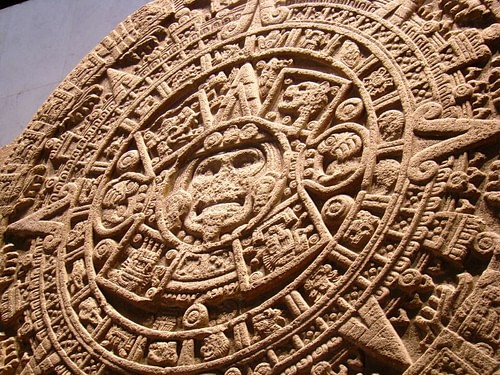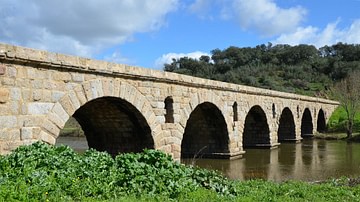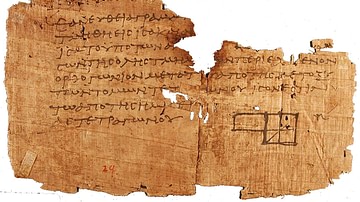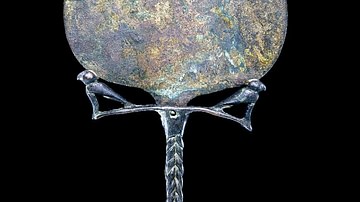
The term science comes from the Latin word scientia, meaning "knowledge". It can be defined as a systematic attempt to discover, by means of observation and reasoning, particular facts about the world, and to establish laws connecting facts with one another and, in some cases, to make it possible to predict future occurrences. There are other ways to define science, but all definitions refer in one way or another to this attempt to discover specific facts and the ability to figure out patterns in which these facts are connected.
There is an interesting quote from Carl Sagan about the scientific attitude:
If we lived on a planet where nothing ever changed, there would be little to do. There would be nothing to figure out. There would be no impetus for science. And if we lived in an unpredictable world, where things changed in random or very complex ways, we would not be able to figure things out. But we live in an in-between universe, where things change, but according to patterns, rules, or as we call them, laws of nature. If I throw a stick up in the air, it always falls down. If the sun sets in the west, it always rises again the next morning in the east. And so it becomes possible to figure things out. We can do science, and with it we can improve our lives. (Carl Sagan, 59)
Early Scientific Developments
The regular occurrence of natural events encouraged the development of some scientific disciplines. After a period of observation and careful recordkeeping, even some of the events perceived as random and unpredictable might begin to display a regular pattern which initially was not immediately obvious. Eclipses are a good example.
In North America, the Cherokee said that eclipses were caused when the moon (male) visits his wife, the sun, and the Ojibway believed the sun would be totally extinguished during an eclipse, so they used to shoot flaming arrows to keep it alight. Stephen Hawking mentions that according to the Vikings, the sun and the moon are being chased by two wolves, Skoll and Hati. When either wolf successfully catches their prey, an eclipse occurs. The Nordics made as much noise as they could to scare off the wolves, so they could rescue the victims:
Skoll a wolf is called who pursues the shining god
to the protecting woods;
and another is Hati, he is Hrodvitnir's son,
who chases the bright bride of heaven.
(The Poetic Edda. Grimnir's Sayings, 39)
Hawking goes on, saying that people eventually realized that the sun and the moon would emerge from the eclipse regardless of whether they made noise to rescue the victims. In societies where they had record keeping on celestial events, they must have noticed after some time that eclipses do not happen at random, but rather in regular patterns that repeat themselves.
Some events in nature clearly occur according to rules, but there are others that do not display a clear pattern of occurrence, and they do not even seem to happen as a result of a specific cause. Earthquakes, storms, and pestilence all appear to occur randomly, and natural explanations do not seem to be relevant. Therefore, supernatural explanations arose to account for such events, most of them merged with myth and legends.
Supernatural explanations gave rise to magic, an attempt to control nature by means of rites and spells. Magic is based on people's confidence that nature can be directly controlled. Magic thought is convinced that by performing certain spells, a specific event will take place. James Frazer has suggested that there is a link between magic and science since both believe in the cause-and-effect principle. In magic, the causes are somehow unclear and they tend to be based upon spontaneous thoughts, while in science, through careful observation and reasoning, the causes are better isolated and understood. Science is founded on the idea that experience, effort, and reason are valid, while magic is founded on intuition and hope. In ancient times, it was common for science to be merged with magic, religion, mysticism, and philosophy since the limits of the scientific discipline were not fully understood.
Babylonian Science
Like in Egypt, priests encouraged much of the development of Babylonian science. Babylonians used a numeral system with 60 as its base, which allowed them to divide circles into 360 degrees. The use of 60 as a base of a mathematical system is not a minor issue: 60 is a number that has many divisors (1, 2, 3, 4, 5, 6, 10, 12, 15, 20, 30, 60), which simplifies the representation of fractions: 1/2 (30/60), 1/3 (20/60), 1/4 (15/60), 1/5 (12/60), 1/6 (10/60), and so forth. As early as 1800 BCE, Babylonian mathematicians understood the properties of elementary sequences, such as arithmetic and geometrical progressions, and a number of geometrical relationships. They estimated the value of pi as 3 1/8, which is about a 0.6 percent error. It is highly likely that they also were familiar with what we today call the Pythagorean Theorem which states that the square of the longest side of a right triangle equals the sum of the squares of the other two sides. However, we have no evidence that the Babylonians proved it formally since their mathematics rested on empirical knowledge rather than formal proof.

It was in astronomy where Babylonians showed a remarkable talent, and magic, mysticism, astrology, and divination were its main drivers. They believed that the movement of the heavenly bodies forecasted some terrestrial event. Since the reign of Nabonassar (747 BCE), the Babylonians kept complete lists of eclipses, and by 700 BCE, it was already known that solar eclipses could only be possible during new moons and lunar eclipses only during full moons. It is possible that by this time Babylonians also knew the rule that lunar eclipses take place every six months, or occasionally every five months. By the time Nebuchadnezzar ruled Babylon, the priests had also calculated the courses of the planets and plotted the orbits of the sun and the moon.
Egyptian Science
Despite their superstitions, Egyptian priests encouraged the development of many scientific disciplines, especially astronomy and mathematics. The construction of the pyramids and other astonishing monuments would have been impossible without highly developed mathematical knowledge. The Rhind Mathematical Papyrus (also known as the Ahmes Papyrus) is an ancient mathematical treatise, dating back to approximately 1650 BCE. This work explains, using several examples, how to calculate the area of a field, the capacity of a barn, and it also deals with algebraic equations of the first degree. In the opening section, its author, a scribe named Ahmes, declares that the Papyrus is a transcription of an ancient copy, possibly 500 years before the time of Ahmes himself.
The flooding of the Nile, which constantly altered the border markers that separated the different portions of land, also encouraged the development of mathematics: Egyptian land surveyors had to perform measurements over and over again to restore the boundaries that had been lost. In fact, this is the origin of the word geometry: "measurement of land". Egyptian land surveyors were very practical-minded: in order to form right angles, which was critical for establishing the borders of a field, they used a rope divided into twelve equal parts, forming a triangle with three parts on one side, four parts on the second side, and five parts on the remaining side. The right angle was to be found where the three-unit side joined the four-unit side. In other words, Egyptians knew that a triangle whose sides are in a 3:4:5 ratio is a right triangle. This is a useful rule of thumb and it is also a step away from the Pythagoras Theorem, which is based on stretching the 3:4:5 triangle concept to its logical limit.
Egyptians calculated the value of the mathematical constant pi at 256/81 (3.16), and for the value of the square root of two, they used the fraction 7/5 (which they thought of as 1/5 seven times). For fractions, they always used the numerator 1 (in order to express 3/4, they wrote 1/2 + 1/4). Unfortunately, they did not know the zero, and their numeral system lacked simplicity: 27 signs were required to express 999.
Greek Science
Unlike other parts of the world where science was strongly connected with religion, Greek scientific thought had a stronger connection with philosophy. As a result, the Greek scientific spirit had a more secular approach and was able to replace the notion of supernatural explanation with the concept of a universe that is governed by laws of nature. Greek tradition credits Thales of Miletus as the first Greek who, around 600 BCE, developed the idea that the world can be explained in natural terms. Thales lived in Miletus, a Greek city located in Ionia, the central sector of Anatolia's Aegean shore in Asia Minor, present-day Turkey. This city was the main focus of the "Ionian awakening", the initial phase of classical Greek civilization, a time when the ancient Greeks developed a number of ideas surprisingly similar to some of our modern scientific concepts.

One of the great advantages of Greece was the influence of Egyptian mathematics, when Egypt opened its ports to Greek trade during the 26th Dynasty (c. 685-525 BCE) and Babylonian astronomy, after Alexander's conquest of Asia Minor and Mesopotamia during Hellenistic times. The Greeks were very talented at systematically innovating upon the Egyptian and Babylonian mathematical and astronomical knowledge. This turned the Greeks into some of the most competent mathematicians and astronomers of antiquity and their achievements in geometry were arguably the finest.
While observation was important at the beginning, Greek science eventually began to undervalue observation in favour of the deductive process, where knowledge is built by means of pure thought. This method is key in mathematics and the Greeks put such an emphasis on it that they falsely believed that deduction was the way to obtain the highest knowledge. Observation was underestimated, deduction was made king, and Greek scientific knowledge was led up a blind alley in virtually every branch of science other than exact sciences (mathematics).
Indian Science
In India, we find some aspects of astronomical science already in the Vedas (composed between 1500 and 1000 BCE), where the year is divided into twelve lunar months (occasionally adding an additional month to adjust the lunar with the solar year), six seasons of the year are named and related to different gods, and also the different phases of the moon are observed and personified as different deities. Many of the ceremonies and sacrificial rites of Indian society were regulated by the position of the moon, the sun, and other astronomical events, which encouraged a detailed study of astronomy.
Geometry was developed in India as a result of strict religious rules for the construction of altars. Book 5 of the Taittiriya Sanhita, included in the Yajur-Veda, describes the different shapes that the altars could have. The oldest of these altars had the shape of a falcon and an area of 7.50 squares purusha (a purusha was a unit equivalent to the height of a man with uplifted arms, about 7.6 feet or 2.3 meters). Sometimes other altar shapes were required (such as a wheel, a tortoise, or a triangle), but the area of these new altars had to remain the same, 7.50 square purusha. Some other times, the size of the altar had to be increased without changing the shape or the relative proportion of the figure. All these procedures were impossible to carry out without a fine knowledge of geometry.
A work known as the Shulba Sutras, first composed in India around 800 BCE, contains detailed explanations of how to perform all the geometrical operations required to support the religious procedures regarding the altars. This text also develops mathematical topics such as square roots and squaring the circle. After developing important geometrical studies, religious practices changed in India, and the need for geometrical knowledge gradually died out as the construction of altars fell out of use.
Possibly the most influential achievement of Hindu science was the study of arithmetic, particularly the development of the numbers and the decimal notation that the world uses today. The so-called "Arabic numbers" actually originated in India; they already appear in the Rock Edicts of the Mauryan emperor Ashoka (3rd century BCE), about 1,000 years before they are used in Arabic literature.
Chinese Science
In China, the priesthood never had any significant political power. In many cultures, science was encouraged by the priesthood, who were interested in astronony and the calendar, but in China, it was government officials who had the power and were concerned with these areas, and therefore the development of Chinese science is strongly linked to government officials. The court astronomers were particularly interested in the sciences of astronomy and mathematics, since the calendar was a sensitive imperial matter: the life of the sky and the life on earth had to develop in harmony, and the sun and the moon regulated the different festivals. During the time of Confucius (c. 551 to c. 479 BCE), Chinese astronomers successfully calculated the occurrence of eclipses.
Geometry developed as a result of the need to measure land, while algebra was imported from India. During the 2nd century BCE, after many centuries and generations, a mathematical treatise named The Nine Chapters on the Mathematical Art was completed. This work contained mostly practical mathematical procedures including topics such as determining the areas of fields of different shapes (for taxation purposes), pricing of different goods, commodities rate exchange, and equitable taxation. This book develops algebra and geometry and also mentions negative quantities for the first time in recorded history. Zu Chongzhi (429-500 CE), estimated the right value of pi to the sixth decimal place and improved the magnet, which had been discovered centuries earlier.
Where the Chinese displayed an exceptional talent was at making inventions. Gunpowder, paper, woodblock printing, and the compass (known as the "south-pointing needle"), are some of the many Chinese inventions. Despite their immense creativity, it is ironic that Chinese industrial life did not undergo any significant development between the Han dynasty (206 BCE-220 CE) to the fall of the Manchu (1912 CE).
Mesoamerican Science
Mesoamerican mathematics and astronomy were highly precise. The accuracy of the Maya calendar was comparable to the Egyptian calendar (both civilizations fixed the year at 365 days) and already in the 1st century CE the Maya used the number zero as a place-holder value in their records, many centuries before the zero appears in European and Asian literature.
Time record-keeping in Mesoamerica included a 260-day period known by the Maya as tzolkin "count of days" and tonalpohualli by the Aztecs. This interval was obtained by combining cycles of 20 days with thirteen numerical coefficients (20 x 13 = 260). The origin of this interval is believed to be around the 6th century BCE in the southern region of the Zapotec Civilization, and it is in tune with some important natural events: 260 is a good approximation of the human gestation period and, in mid-Mesoamerican latitude, is perfectly consistent with the agricultural cycle. There was also a 360-day period known as tun by the Maya, composed of cycles of 20 days and 18 months (20 x 18 = 360). Most Mesoamerican calendars would be based on one tun plus an additional month of five days (360 + 5 = 365), which is a good approximation of the solar cycle. This count regulated the holidays, religious ceremonies, sacrifices, work life, tributes, and many other aspects of religious, political, and social life.
The 260- and the 365-day count would be run simultaneously, and every 52 years the starting point of both would match up, an event termed as a "calendar round". The Aztec codices suggest that during the time of a calendar round, it was believed that the world was vulnerable to destruction, so at that time they held a number of sacrifices and religious ceremonies in order to please the gods and ensure the world would continue.
The Mayas created the longest Mesoamerican calendar cycle by multiplying one tun by 20 (360 days x 20 = 7,200 days, or one katun) and one katun by 20 (7,200 days x 20 = 144,000 days, or one baktun). The Mayan Long Count was composed of 13 baktuns (144,000 days x 13 = 1,872,000 days), or 5,125.37 years. The starting point of the Mayan Long Count is August 11, 3114 BCE and it ended on December 21, 2012 BCE.








